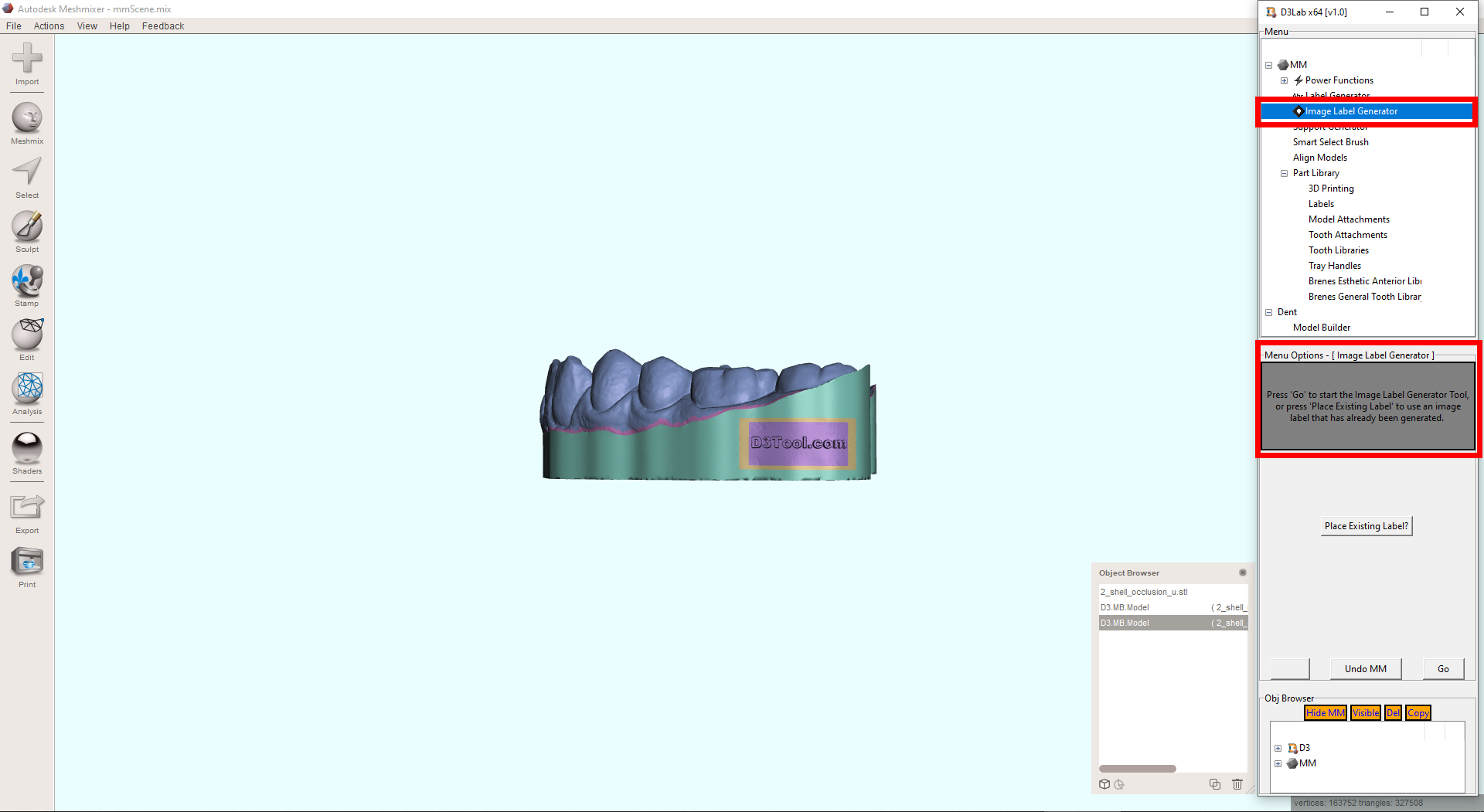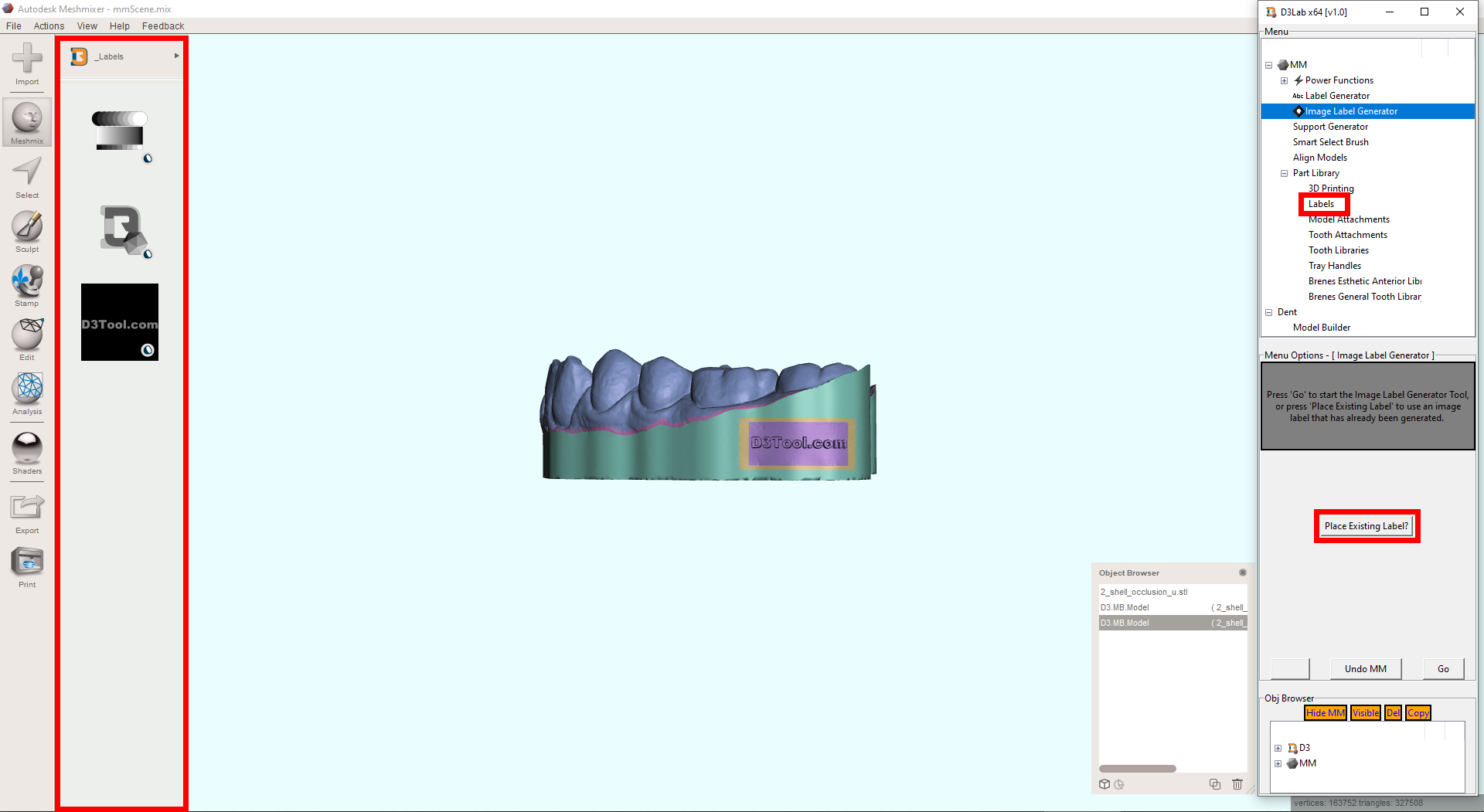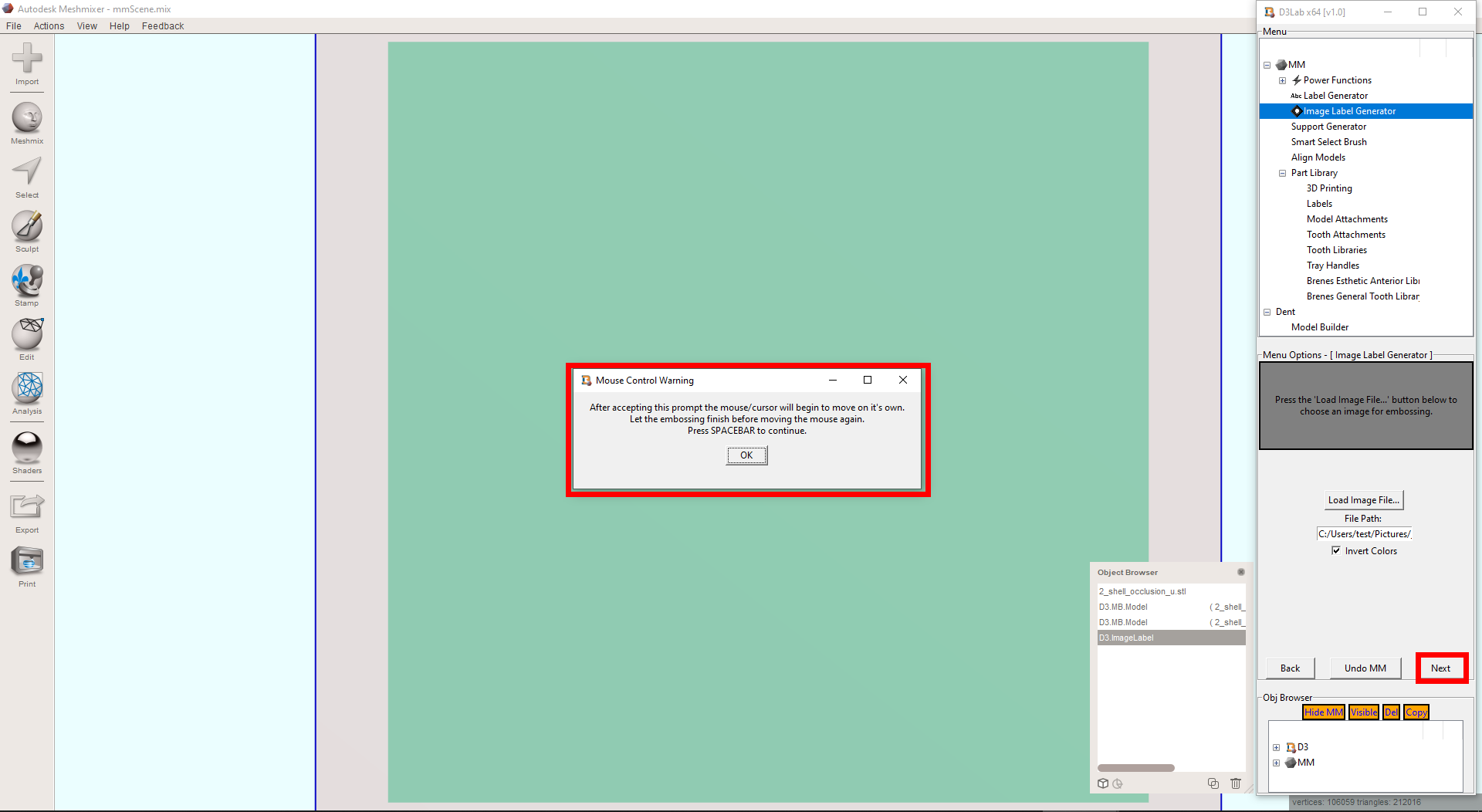In this lesson, you will learn:
- How to use the Image Label Generator tool in D3Lab x64
- When and why to use the Image Label Generator tool
- The similarities that exist between the Text Label Generator and the Image Label Generator
Preface
Sections
- Starting the Tool
- Using Previous Image Labels
- Loading the Image File
- Allow Mouse Control Prompt
- Set Location of Image Label
- Finalize Image Label
- Advanced Usage
Demonstration Videos
Tool Parameters:
- Place Existing Label – This button appears upon initial load of the Image and Text Label Generator tool, and allows you to bypass the entire tool if you have already created a label that you want to use. All text labels created with the Image Label Generator tool are stored within Meshmixer under the category “_Labels”.
- Load Image File – A button that opens a file selector for you to choose an image file. Choosing a file will fill in the “File Path” parameter for you.
- File Path – The file path to the image file. If you know what you are doing, you can directly type in the location of your image file here as well.
- Invert Colors – The color black is represented as transparent, and the color white is represented as the boldest embossment. The shades of grey in between represent the varying levels of embossment you will see on your image label.

Therefore, if your image is setup with a white background and a black image, the background would be embossed while the image would stay flat. If you know this is the case for you image, you can check this box to automatically invert the colors for you on the fly. If your image has colors and is not just black and white, it gets converted to greyscale first. - Finish – At the very end of the tool, after you are done adjusting the size, location and rotation of your image label, pressing this button will finalize the placement on the model.
- Export – This button is presented at the end of the tool and gives you the option to export your current model, if this is your last step before printing.
Image Label Generator – Start Tool – [Step 1]
Starting any of the tools in D3Lab x64 begins with clicking on the tool name in the top “Menu” panel. The initial options are presented to you in the Menu Options section after clicking on the tool name:

To create a new image label, make sure the model you want to emboss is loaded and selected in Meshmixer, then press “Go” in D3Lab x64.
Image Label Generator – Using Previous Image Labels – [Step 2]
The only initial option available for this tool is the button “Place Existing Label?” which opens up the “_Labels” category of the Part Library and allows you see all of the previous image and text labels you have created. You can simply drag and drop an existing label by left click and dragging the existing label onto your model (please note it is necessary to restart Meshmixer in order to see the text labels made during that session show up in the “_Labels” category). You can also access the previously made text labels by expanding the “Part Library” list in D3Lab x64, and clicking on “Labels”:

Image Label Generator – Loading the Image File – [Step 3]
Again, to create a new image label, make sure the model you want to emboss is loaded and selected in Meshmixer, then press “Go” in D3Lab x64. A blank square label is automatically loaded into Meshmixer, and you are asked to select an image file. Do this by clicking on the “Load Image File…” button and choosing the image file you want to emboss on your model.


The color black in your chosen image file is represented as transparent, and the color white is represented as the boldest embossment. The shades of grey in between represent the varying levels of embossment you will see on your image label.
Therefore, if your image is setup with a white background and a black image, the background would be embossed while the image would stay flat. If you know this is the case for you image, you can check the box that says “Invert Colors” to automatically invert the colors for you on the fly. If your image has colors and is not just black and white, it gets converted to greyscale first. No changes are made to your original image file. Once you have selected your image file, press the “Next” button to continue.
Image Label Generator – Allow Mouse Control Prompt – [Step 4]
In order to create an image label, D3Lab x64 will need to temporarily take control of your mouse to do some automated precise clicking on your behalf. A pop up prompt will be shown in the center of your screen asking permission to do this. To avoid any accidental clicks, it is suggested and recommended to simply press the Spacebar key on your keyboard to accept the pop up prompt and to begin generating the image label.

Image Label Generator – Set Location of Image Label – [Step 5]
You are now asked to choose where on the model you would like the image to be placed. Single left click on the model to mark it with an orange spot and then press the “Next” button to proceed.

Image Label Generator – Finalize Image Label – [Step 6]
You now have the opportunity to adjust the size, location and rotation of the image label if indicated. To adjust the size of the image, left click and drag the triangular tab on the outside of the circle next to your image label. To adjust the location, left click and drag the white sphere in the center of the circle. Lastly, to adjust the rotation of the image, left click and drag inside of the circle. Once satisfied with size and placement, press the “Finish” button in the Menu Options of D3Lab x64 to merge the image label onto the model.

Image Label Generator – [Advanced]
Consider using images that have only text in the exact font, size and orientation you desire for more complex text labels. Try taking a high resolution photo of a patient’s smile to see a 2D image be transformed into a 3D mesh (not accurate to size, nor is it esthetically appealing, but very interesting nonetheless. Maybe the start for a waxup?).
Here are some videos that demonstrate how the tool works:
Video 1 – Emboss Any Image/Text on Dental Models and How to Generate Supports for 3D Printing
At the completion of this lesson, you should be able to:
- Understand how to create your own image labels
- Understand how to access previously created image labels
- Know how to adjust the size, location and rotation of the image label being embossed on the model
- Recognize how different colors impact the end embossment result

